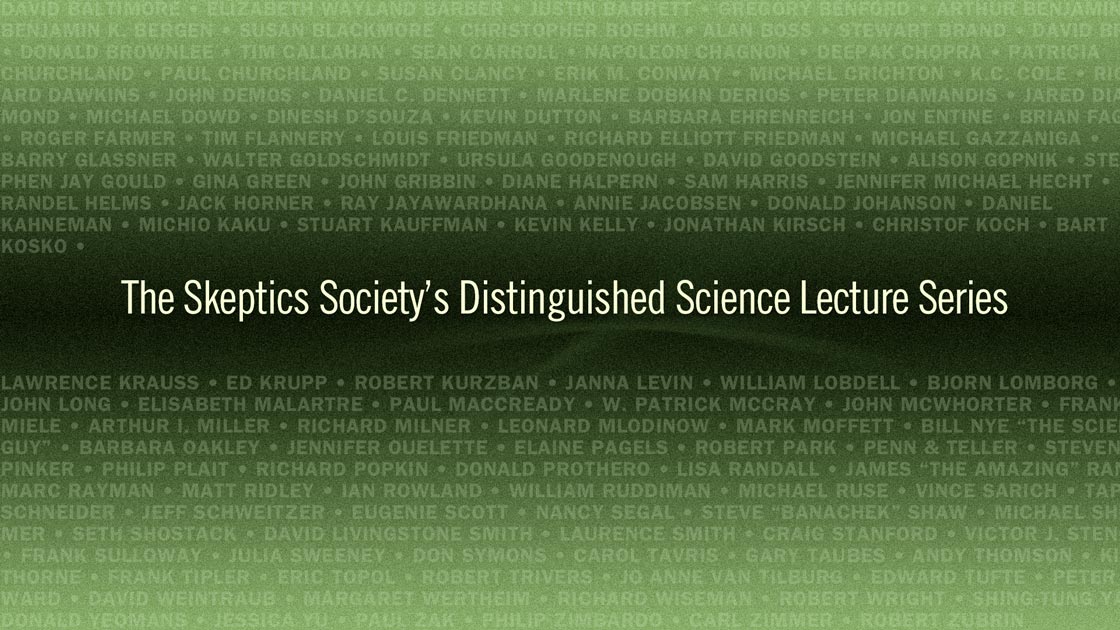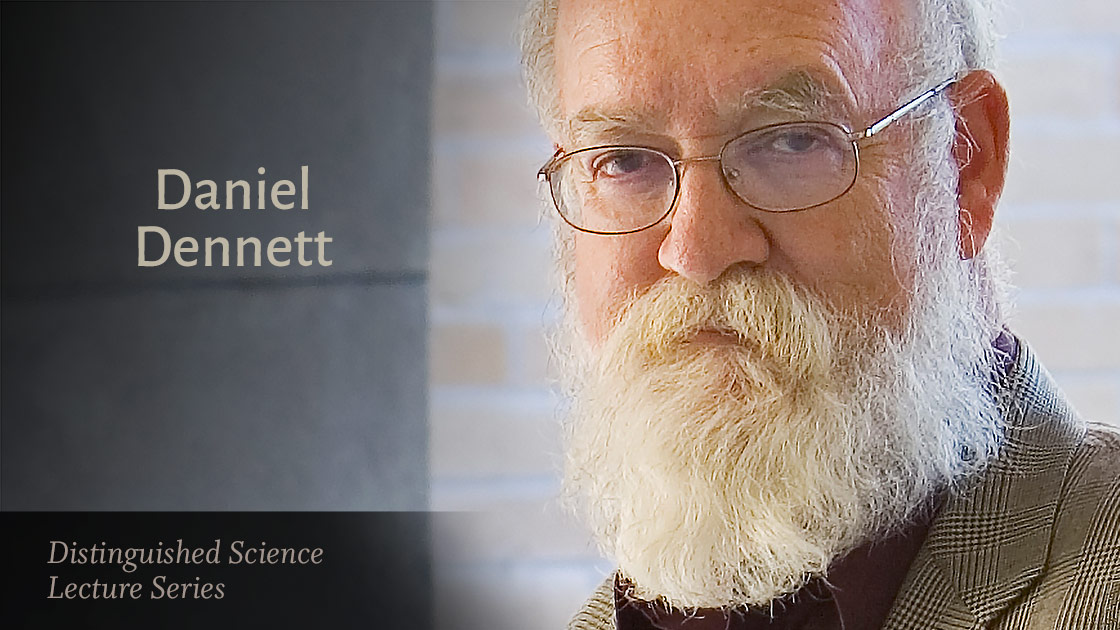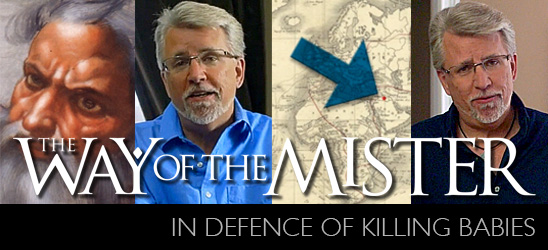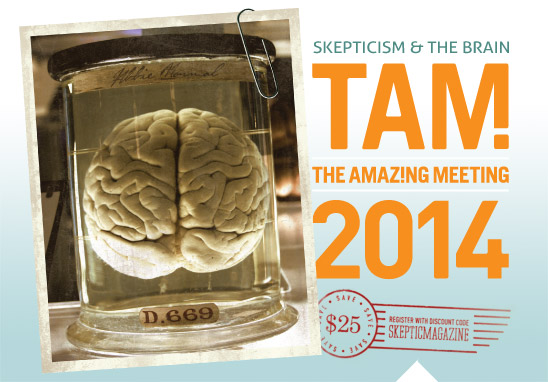In this week’s eSkeptic:
- Upcoming Lecture at Caltech: Dr. Rebecca Newberger Goldstein
- Distinguished Science Lecture: Dr. Daniel Dennett — Breaking the Spell: Religion as a Natural Phenomenon
- New Episode: The Way of the Mister: In Defense of Killing Babies
- Feature: Eye Movement Desensitization and Reprocessing (EMDR) Magic
- The Amazing Meeting 2014: July 10–13, South Point Casino, Las Vegas
- Our Next Geology Tour: Grand Canyon, Zion & Bryce (Jun. 13–20, 2014)
Our Next Science Lecture

Plato at the Googleplex: Why Philosophy Won’t Go Away
Dr. Rebecca Newberger Goldstein
Sun., June 8, 2014 at 2 pm
Baxter Lecture Hall, Caltech
Stephen Hawking said philosophy is dead. Plato would disagree, says the acclaimed philosopher and novelist Rebecca Goldstein, who provides a dazzlingly original plunge into the drama of philosophy, revealing its hidden role in today’s debates on religion, morality, politics, and science. Philosophy is not obsolete, and the ancient questions that Plato asked are still relevant in the age of cosmology and neuroscience, crowd-sourcing and cable news. Imagine that Plato came to life in the 21st century and embarked on a multicity speaking tour. How would he handle the host of a cable news program who denies there can be morality without religion? How would he mediate a debate between a Freudian psychoanalyst and a tiger mom on how to raise the perfect child? How would he answer a neuroscientist who, about to scan Plato’s brain, argues that science has definitively answered the questions of free will and moral agency? What would Plato make of Google, and of the idea that knowledge can be crowd-sourced rather than reasoned out by experts? With a philosopher’s depth and a novelist’s imagination and wit, Goldstein probes the deepest issues confronting us by allowing us to eavesdrop on Plato as he takes on the modern world. A book signing will follow the lecture.
Order Plato at the Googleplex from Amazon.
DISTINGUISHED SCIENCE LECTURE
Dr. Daniel Dennett — Breaking the Spell: Religion as a Natural Phenomenon
One of the greatest thinkers of our age tackles one of the most important questions of our time: why people believe in God and how religion shapes our lives and our future. In this lecture, based on his new book of the same title, Dr. Dennett shows that for the vast majority of people there is nothing more important than religion. It is an integral part of their marriage, child rearing, and community. Dennett takes a hard look at this phenomenon and asks: Where does our devotion to God come from and what purpose does it serve? Is religion a blind evolutionary compulsion or a rational choice? In a spirited investigation that ranges widely through history, philosophy, and psychology, Dennett explores how organized religion evolved from folk beliefs and why it is such a potent force today. Deftly and lucidly, he contends that the ‘belief in belief’ has fogged any attempt to rationally consider the existence of God and the relationship between divinity and human need.
Dr. Dennett is a professor and director of the Center for Cognitive Studies at Tufts University, and the author of the highly acclaimed Darwin’s Dangerous Idea, Consciousness Explained, and Freedom Evolves.
You play a vital part in our commitment to promote science and reason. If you enjoyed this Distinguished Science Lecture, please show your support by making a donation.
The Latest Episode of The Way of the Mister: In Defense of Killing Babies
Is the story of Noah’s Flood “One of the most moral stories ever told” as Dennis Prager claims? I think not!
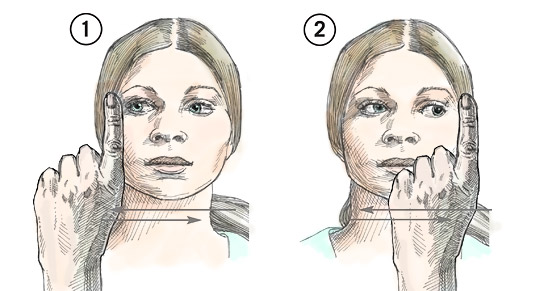
Eye Movement Desensitization and Reprocessing (EMDR) therapy consists of concentrating on a traumatic or disturbing memory and tracking the therapist’s finger as it’s moved back and forth in front of the eyes.
About this week’s eSkeptic
In this week’s eSkeptic, we present an article from Skeptic magazine issue 7.4 (1999) in which three psychologists examine in detail the most recent scientific evidence (at the time) regarding the efficacy of Eye Movement Desensitization and Reprocessing (EMDR) therapy. The authors consider strategies employed by EMDR’s proponents to deal with negative findings, and note historical parallels between EMDR and other controversial treatments. This scientific and historical analysis of EMDR may help shed light on a variety of other potentially pseudoscientific practices in the field of clinical psychology. In this respect, EMDR serves as a useful object lesson in the study of pseudoscience.
Share this article with friends online.
Subscribe | Donate | Watch Lectures | Shop
Eye Movement Magic:
Eye Movement Desensitization and Reprocessing
by Gerald M. Rosen, Richard J. Mcnally & Scott O. Lilienfeld
While strolling through a park one day, Francine Shapiro noticed that certain of her troubling thoughts suddenly lost their distressing qualities. Curious about what had happened, Shapiro regenerated the mental images and again found them no longer upsetting. Attending closely to her behavior, she realized that her eyes had been spontaneously and rapidly shifting back and forth. Suspecting that rapid eye movements might possess hitherto untapped therapeutic powers, Shapiro began informal tests on her friends. She asked them to concentrate on a traumatic or disturbing memory and to track her finger visually as she moved it back and forth in front of their eyes. Her friends reported feeling better and their memories were no longer disturbing.
Shapiro’s serendipitous observations inspired her to conduct a formal study in fulfillment of her doctoral dissertation in clinical psychology at the California based, never-accredited, and nowdefunct Professional School of Psychological Studies. This was an opportune time to conduct such a study. Posttraumatic Stress Disorder (PTSD) had been recognized in 1980 by the American Psychiatric Association as a distinct mental disorder resulting from exposure to extreme, terrifying events, such as combat and rape. People with PTSD often feel “numb,” finding it difficult to experience positive emotions for loved ones, they are often hypervigilant and startle easily, and they typically “re-live” their terrible experiences in the form of nightmares and recurrent disturbing recollections of the trauma. This last PTSD symptom constituted the very phenomenon that Shapiro believed eye movements might help. What better way to test her discovery, therefore, than to apply the induction of eye movements to the treatment of traumatic memories associated with PTSD?
Shapiro treated 22 PTSD patients in her dissertation study by asking them to recall a traumatic memory and to follow her moving fingers with their eyes. She published her findings in 1989 in the Journal of Traumatic Stress, reporting that a single session of “Eye Movement Desensitization” abolished the distress associated with a traumatic memory in 100% of the patients. These results caught the attention of psychiatrists and clinical psychologists who were accustomed to spending much more time desensitizing the traumatic memories of their patients. Shapiro concluded that eye movements somehow accelerated the desensitization process associated with traditional imaginal exposure techniques. Further, she claimed that clinicians could “achieve complete desensitization of 75–80% of any individually treated trauma-related memory in a single 50-minute session,” simply by reading her 1989 article. Shortly thereafter, Shapiro renamed her method “Eye Movement Desensitization and Reprocessing” or EMDR, a method that one enthusiast has claimed to be “the most revolutionary, important method to emerge in psychotherapy in decades.” Others have declared EMDR to be nothing short of “amazing,” “profound,” and a “miracle” (see Shapiro and Forrest, 1997).
Although several popular expositions of EMDR have appeared (Gastright, 1995; Lilienfeld, 1996), the need to revisit this topic is pressing when one considers that the EMDR phenomenon thrives with unabated vigor and intensity, a full decade since its inception. EMDR workshops are offered throughout the world on an almost weekly basis. EMDR has been used to treat survivors of the Oklahoma City bombing, refugees in Bosnia and other areas ravaged by war, and communities where major natural disasters have occurred. EMDR enthusiasts have a professional organization to promote their method—the Eye Movement Desensitization and Reprocessing International Association (EMDRIA), and new applications of the method now can be discussed at the annual international EMDRIA conference. The National Institute of Mental Health has recently funded two major clinical outcome trials comparing EMDR with other treatments (e.g., cognitive-behavioral therapy and Prozac). Reflecting the major impact EMDR appears to be having in clinical psychology, the Journal of Anxiety Disorders, a leading peer-reviewed academic journal, recently featured a special issue (Spring, 1999) with 13 articles devoted entirely to EMDR. Clearly, this is a treatment method that warrants continued scrutiny.
Moving beyond popular expositions on EMDR, we examine in detail the most recent scientific evidence that bears on the method’s efficacy consider strategies employed by EMDR’s proponents to deal with negative findings, and note historical parallels between EMDR and other controversial treatments. This scientific and historical analysis of EMDR may help shed light on a variety of other potentially pseudoscientific practices in the field of clinical psychology. In this respect, EMDR serves as a useful object lesson in the study of pseudoscience.
The Spread of EMDR
Shortly after completion of her doctorate, Shapiro founded the EMDR Institute, Inc. and promoted her admittedly experimental method in weekend training workshops held throughout the world. By 1990, the claim was made that EMDR had evolved into a complex methodology, so that Shapiro’s original article could no longer suffice as an adequate description of the method. Instead, a more costly two-day workshop was required to be “certified.” By 1991, even more training was required and a “Level II” workshop was mandatory for certification by the EMDR Institute, Inc. Thus, in the short span of two years, Shapiro had gone from her 1989 statement to an elaborate proprietary training model. These changes were reported to be motivated by clinical “experience,” without any data to show that Level II training yielded better results than Level I, or the written instructions from 1989. Despite the absence of data, clinicians were told that using EMDR without appropriate training is dangerous, and training in authorized workshops became the minimum standard. By 1997, over 25,000 mental health professionals had accepted Shapiro’s dictum and completed at least one of the workshops.
Shapiro report[ed] that a single session of ‘Eye Movement Desensitization’ abolished the distress associated with a traumatic memory in 100% of the patients.
One of us completed both Level I and Level II training and experienced first hand the revival-tent fervor of EMDR enthusiasts (Rosen, 1996). Shapiro spoke about an increasing range of applications for EMDR, the possibility of reversing cycles of violence in our society, and the use of EMDR in humanitarian efforts throughout the world. EMDR trainers went to Oklahoma City in the wake of the bombing, and volunteered their services in war ravaged Bosnia. Shapiro raised the possibility that EMDR might help people combat cancer or other terminal illnesses. An announcement for specialty workshops suggested the use of EMDR for everyday life issues, with such titles as, “Using EMDR to Help People Reach Their Peak at Work.” Dr. Shapiro’s vision of EMDR’s contribution to our mental health and the world’s future seemed boundless.
In addition to highly successful workshops, Shapiro began making headway in the academic and professional world of clinical psychology. She received the 1994 Distinguished Scientific Achievement Award from the California State Psychological Association, and she gave invited lectures for the American Psychological Association, the European Association for Behavioural and Cognitive Psychotherapies, and other international associations. A Committee within the American Psychological Association officially listed EMDR as “probably efficacious for civilian PTSD” after two randomized clinical trials with traumatized civilians found the method better than no treatment at all. These developments lent further credence to the novel notion that eye movements could assist in the cure of mental ailments. EMDR clearly represents a major event in the landscape of contemporary clinical psychology. Unfortunately, a careful analysis of published studies demonstrates that something is terribly amiss.
Playing Fair With Science
Studies on EMDR have found scant empirical support for the dramatic claims made by its enthusiasts. Most damaging are a number of recent well controlled studies that have consistently failed to find evidence that eye movements possess any therapeutic powers (see DeBell and Jones, 1997; Foa and Meadows, 1997; Lohr, Tolin and Lilienfeld, 1998; McNally, 1999a). Individuals who simply imagine a traumatic memory while staring straight ahead do as well as those who visually track the therapist’s moving finger (Hazlett-Stevens, Lytle, and Borkevec, 1996). Other recent studies have compared EMDR with more traditional methods that expose clients to traumatic memories and desensitize anxiety. These studies find EMDR no more, and sometimes less, effective than the traditional methods of exposure (Devilly and Spence, 1999; Muris, Merckelbach, Van-Haaften and Mayer, 1997). Findings like these suggest that Shapiro borrowed elements from extant methods, added the unnecessary ingredient of finger waving, and then took her technique on the road before science could catch up.
Shapiro’s general response to negative findings has been to cite numerous publications that demonstrate EMDR’s effectiveness and to point out that a Committee within the American Psychological Association (APA) has recognized the method as empirically supported and effective in treating civilian PTSD. Unfortunately, the Committee’s standards only require that two studies demonstrate a method as more effective than no treatment. Anyone familiar with the history of psychotherapy will understand that this is not a stringent requirement, since almost all psychological interventions instil a sense of hope, demonstrate a placebo effect, and achieve effects greater than no treatment (Frank, 1973). Indeed, according to the APA Committee’s criteria, both personal prayer and sugar pills should be considered empirically supported treatments, as these interventions have been found in multiple controlled studies to be more effective than the absence of treatment. More to the point, any treatment that adds an inert ingredient (such as eye movements) to an already developed treatment (such as exposure based therapies) can meet the criteria. In this context, one can view APA’s listing of Shapiro’s eye movement method as a reflection on the Committee’s weak criteria, rather than a ringing endorsement of EMDR.
Shapiro also contends that studies failing to support EMDR have not employed the method faithfully, whereas studies demonstrating positive effects have had good “treatment fidelity.” This position assumes that EMDR is effective; there are critical procedural components to which one must faithfully adhere; and treatment effects, though powerful, are not so robust that violations in procedural integrity can be ignored. The argument sounds reasonable at first; but, in fact, Shapiro has misused the concept of treatment fidelity by continually changing the procedures and levels of training which define faithful adherence to the method (Rosen, 1999). Thus, Shapiro originally claimed that simple written descriptions were sufficient to learn the method. By the time psychologists had implemented the 1989 written instructions and found no difference between EMDR and a no-eye movement control, it had become necessary to take Level I training. By the time Level I trained psychologists were finding in controlled studies that EMDR was not as effective as Shapiro had claimed, they were accused of being only half-trained because they had not taken the Level II workshop. Then Roger Pitman and his colleagues at Harvard Medical School received Level II training and compared the eye movements of EMDR with a control condition that employed finger tapping (Pitman, Orr, Altman, Longpre, Poire, and Macklin, 1996). By the time their finding of no difference between groups was published, Shapiro was claiming that “alternate forms of bilateral stimulation” could work just as well as eye movements. In other words, Pitman and his colleagues, some of the most prominent researchers in the field of PTSD, had just wasted their time comparing EMDR with itself!
Shapiro has…continually chang[ed] the procedures and levels of training which define faithful adherence to the method. …scientists who investigate the efficacy of EMDR are forced to ‘Keep running just to stay in the same place.’
The shifting procedures and training requirements for EMDR have created a seemingly endless catchup game for scientists. How can scientists test a method whose proponents insist on treatment fidelity for the induction of eye movements, then state that alternate tapping strategies are possible, next argue that various protocols must be followed, and then switch the decision rules for those protocols? How can scientists know they have been properly trained in a method when simple written descriptions first sufficed, then a Level I workshop was required, and then Level II training was the minimum standard? One can easily comprehend how the strategy adopted by Shapiro and other EMDR enthusiasts has created a slippery slope where refuted hypotheses constantly change, and the data never catch up. Like the Red Queen in Lewis Carroll’s Through the Looking Glass, scientists who investigate the efficacy of EMDR are forced to keep running just to stay in the same place.
Lessons from History: Mesmer and Shapiro

Because the force behind Mesmerism was described as “Animal Magnetism” it inspired many satirical depictions. The finger movements of the EMDR therapist bear an intriguing resemblance to those used in some early forms of Mesmerism.
If Shapiro had merely described EMDR as a minor variant of existing desensitization techniques using imagery, or if she had stopped to test the role of eye movements before marketing her method, we would not be writing this article today. However, instead of following this road in a manner consistent with the tenets of science, Shapiro demonstrated striking entrepreneurial zeal and parlayed her “discovery” into a spectacularly successful commercial enterprise. This is not the first time that a controversial method has been so promoted. In fact, the story of EMDR is eerily reminiscent of Franz Mesmer’s discoveries in the late 18th century, with McNally (1999b) documenting no fewer than 17 striking parallels between the histories of the Mesmerism and EMDR movements. Consider, for example, that some scholars hold that Mesmer creatively applied the scientific concepts of his day in a sincere effort to alleviate human suffering, thereby establishing the foundations of modern hypnosis. Others regard Mesmer as a cynical wheelerdealer whose contributions to hypnosis were nothing more than the happy side effect of his entrepreneurial zeal. Shapiro has similarly provoked widely discrepant professional appraisals. Both Mesmer and Shapiro had their therapeutic epiphanies while walking outdoors; Mesmer was on a retreat in the Alps, Shapiro was strolling through a park. Like Shapiro, Mesmer established a lucrative institute for providing training, and insisted that trainees sign a document promising they would not impart their newly formed and powerful skills to others. Both were charismatic leaders who inspired the founding of professional societies to promote their therapies, and both offered pro bono treatment in the face of criticism that they were merely engaged in profit-making. Both Mesmerism and EMDR have been proclaimed useful for an astonishing range of ailments.
Some characteristics of ingeniously promoted “miracle cures”
- Therapy is discovered through a personal epiphany.
- Therapy is proclaimed useful for an astonishing range of ailments.
- Founders establish lucrative training institutes and insist on trainee secrecy.
- Charismatic leaders inspire the founding of professional societies to promote the therapy.
- Leaders offer pro bono treatment in the face of criticism.
- Disappointing results are blamed on poorly trained researchers.
- Professional appraisals of the therapy vary from extremely positive to extremely negative.
Animal magnetism therapists touted the method for gout, blindness, deafness, scurvy, and paralysis in addition to psychosomatic problems. EMDR therapists claim their method is useful for paranoid schizophrenia, learning disabilities, eating disorders, grief, substance abuse, rage, guilt, multiple personality disorder, cancer, and even AIDS. Both Mesmer and Shapiro have challenged scientists to test their methods, and both have complained that disappointing results were attributable to poorly trained researchers. Although the striking parallels between Mesmer and Shapiro in no way impugn the scientific validity of EMDR, comparative analysis suggests that ingeniously promoted “miracle cures” are likely to share many properties. Animal Magnetism Therapy and EMDR are two historically salient treatments that have stirred great excitement, only to fail the tests of time and science. There have been many others. A physician, James Walsh, wrote in 1923 on “The Story of the Cures that Fail,” and noted the importance of a patient’s faith in treatment. Dr. Walsh also observed that faddish techniques often parallel the latest developments in science. Thus, Mesmerism occurred at a time when early experiments on electricity had captured the imagination of the public. Likewise, references by Shapiro to “accelerated information processing” and “neuro networks” echo computer metaphors common today.
Historical lessons from cures that fail illustrate how novel treatments initially induce high levels of expectancies, but often lose their effectiveness over time. The history of failed therapies argues for caution and skepticism when bold new claims are made. Unfortunately, many of EMDR’s proponents have made the very errors that Dr. Walsh so presciently warned us about. The continued acceptance and proliferation of EMDR among psychologists also represents a fundamental shift of attitude toward the most basic assumptions concerning burden of proof. Thus, before it was demonstrated convincingly that eye movements mattered, thousands of professionals started taking expensive workshops and waving their fingers. These psychologists, and the public, might consider a useful caution provided by James Oberg and reiterated by Carl Sagan (1995): it is a virtue to keep an open mind when evaluating new ideas, “just not so open that your brains fall out.” ![]()
Bibliography
- DeBell, C. and R.D. Jones. 1997. “As Good as it Seems? A Review of EMDR Experimental Research.” Professional Psychology: Research and Practice, 28, 153–163.
- Devilly, G.J. and S.H. Spence. 1999. “The Relative Efficacy and Treatment Distress of EMDR and a Cognitive-Behavior Trauma Treatment Protocol in the Amelioration of Posttraumatic Stress Disorder.” Journal of Anxiety Disorders, 13, 131–158.
- Foa, E.B. and E.A. Meadows. 1997. “Psychosocial Treatments for Posttraumatic Stress Disorder: A Critical Review. Annual Review of Psychology, 48, 449–480.
- Frank, J.D. 1973. Persuasion and Healing: A Comparative Analysis of Psychotherapy. Baltimore: Johns Hopkins University Press.
- Gastright, J. 1995. “EMDR Works! Is That Enough?” Cincinnati Skeptic, 4, 1–3.
- Hazlett-Stevens, H., R.A. Lytle, and T.D. Borkevec. 1996. “Efficacy of Eye Movement Desensitization in the Treatment of Cognitive Intrusions Related to Memories of a Past Stressful Event.” Paper presented at the 30th Annual Convention of the Association for Advancement of Behavior Therapy, New York, N.Y. November.
- Lilienfeld, S.O. 1996. “EMDR Treatment: Less Than Meets the Eye?” Skeptical Inquirer, 20, 25–31.
- Lohr, M.M., D. F. Tolin, and S.O. Lilienfeld. 1998. “Efficacy of Eye Movement Desensitization and Reprocessing: Implications for Behavior Therapy.” Behavior Therapy, 29, 123–156.
- McNally, R.J. 1999a. “Research on Eye Movement Desensitization and Reprocessing (EMDR) as a Treatment for PTSD.” PTSD Research Quarterly, 10 (1), 1–7.
- McNally, R.J. 1999b. “EMDR and Mesmerism: A Comparative Historical Analysis.” Journal of Anxiety Disorders, 13, 225-236.
- Muris, P.H., H. Merckelbach, B. Van Haaften, and B. Mayer. 1997. “Eye Movement Desensitization and Reprocessing Versus Exposure in Vivo: A Single Session Crossover Study of Spider-Phobic Children.” British Journal of Psychiatry, 171, 82–86.
- Pitman, R.K., S.P. Orr, B. Altman, R.E. Longpre, R.E. Poire, and M.L. Macklin. 1996. “Emotional Processing During Eye Movement Desensitization and Reprocessing Therapy of Vietnam Veterans with Chronic Posttraumatic Stress Disorder.” Comprehensive Psychiatry, 37, 419–429.
- Rosen, G.M. 1996. “Level II training for EMDR: One Commentator’s View.” The Behavior Therapist, 19, 76–77.
- ____. 1999. “Treatment Fidelity and Research on Eye Movement Desensitization and Reprocessing (EMDR).” Journal of Anxiety Disorders, 13, 173–184.
- Shapiro, F. 1989. Efficacy of the eye movement desensitization procedure in the treatment of traumatic memories. Journal of Traumatic Stress, 2, 199–223.
- Shapiro, F. and M.S. Forrest. 1997. EMDR: The Breakthrough Therapy for Overcoming Anxiety, Stress, and Trauma. New York: Basic Books.
- Sagan, C. 1995. The Demon-Haunted World: Science as a Candle in the Dark. New York: Random House.
- Walsh, J.J. 1923. Cures: The Story of the Cures that Fail. New York: D. Appleton.
About the Authors
Dr. Gerald M. Rosen practices clinical psychology in Seattle, Washington, and holds a joint appointment as Clinical Associate Professor in the Departments of Psychology and Psychiatry at the University of Washington. He received Level I and Level II training in EMDR from Dr. Shapiro, and has been writing commentaries and reviews on the method ever since. He has authored more than 50 publications, many of which focus on professional standards and ethic when psychologists promote products to the public.
Dr. Richard J. McNally is Professor of Psychology in the Department of Psychology at Harvard University, Cambridge, Massachusetts. He is the author of more than 165 publications, most concerning anxiety and traumatic stress disorders. McNally served with the American Psychiatric Association’s subgroup on Posttraumatic Stress Disorder for the 4th edition of the Association’s Diagnostic and Statistical Manual. His research has been funded by the National Institute of Mental Health.
Dr. Scott O. Lilienfeld is an assistant professor in the Department of Psychology at Emory University. His principal areas of research interest are the etiology, assessment, and treatment of personality disorders and anxiety disorders. In addition, he maintains a long-standing interest in the problem of pseudoscience in contemporary clinical psychology.
Join Us For The Amazing Meeting
South Point Casino, Las Vegas
July 10–13, 2014
How does cognitive science inform the project of skepticism? What brain sciences should you be skeptical about? Are brains hard-wired for belief in the unbelievable? Explore the science of the brain at The Amazing Meeting 2014: the world’s largest celebration of science and skepticism!
Our theme this year—Skepticism & The Brain—focusses on the cognitive and brain sciences and how they inform the project of skepticism. Keynote speakers include the acclaimed philosopher, cognitive scientist, and best selling author DANIEL DENNETT, Scientific American Editor-in-Chief MARIETTE DICHRISTINA, BILL NYE THE SCIENCE GUY, and MICHAEL SHERMER, Editor-in-Chief of Skeptic magazine. Other speakers include neurophilosopher Patricia Churchland, Australia’s Dr. Karl, Evolution & Human Behavior Editor-in-Chief Robert Kurzban, Brainwashed: The Seductive Appeal of Mindless Neuroscience authors Scott Lilienfeld and Sally Satel, M.D., influential memory researcher Elizabeth Loftus, clinical neurologist Steven Novella, M.D., immunologist Paul Offit, M.D., National Center for Science Education’s Eugenie Scott, psychologists and best selling authors Carol Tavris and Richard Wiseman, and many, many more!
This annual celebration of critical thinking is an unparalleled opportunity to make like-minded friends, enjoy some of the brightest minds on issues important to skeptics, and leave with tools for spreading a helpful and educational message to those who might be hurt by charlatans and unfounded belief. Join James Randi and over a thousand other like-minded folks for four days of fun, friendship, and critical thinking!
Enter “SKEPTICMAGAZINE” when registering and save $25.


